One thing I particularly enjoy doing is taking a firearm and trying to figure out as much about it as I can, based on the appearance, markings, modifications, etc. It’s the details and the stories behind old guns that make them interesting, and so it’s fun to try to tease out those details. It’s best done in person when you can examine all parts of the gun in question, but photos make a decent substitute. I recently got an email from a reader asking what I can tell him about a rifle, and I figure it would be fun to share it with you.
The rifle is a Mosin-Nagant that he bought from a pawn shop, and was wondering if it might be a Bannerman conversion. Here are the photos he sent:
To start with, this rifle was definitely not converted to .30-06, because you can see that the barrel shank is fully intact. Now, Bannerman didn’t rechamber all their Mosin-Nagant rifles, and they did sell them intact in 7.62x54R. This particular one was clearly sporterized by someone at some point (the front sight is a replacement, the bolt handle is bent, and the barrel and stock are both cut down), but almost certainly not by Bannerman. The reason is that it was made by Remington in 1918. If you are wondering what Remington was doing making Mosin Nagants, it is because Russia was in desperate need of arms during WWI, and couldn’t produce nearly enough domestically to arms its military. So the Czar placed orders with several American companies, including Mosins from New England Westinghouse and Remington, and Model 1895 lever action rifles from Winchester. Hundreds of thousands of these were being produced and delivered starting in 1915, but the 1917 Russian Revolution interrupted things. The communists stopped paying for the rifles that the Czar had ordered, and that left New England Westinghouse and Remington with a lrge stock of rifles and parts, and a significant debt from tooling up for such large production. It placed both companies in very serious financial trouble, and so the US government stepped in and bailed them out by purchasing the remaining rifles. Some went to the National Guard, some were used for training, some went on the Archangel Expedition with the Michigan Polar Bears…but American soldiers really were not enthusiastic about them. By the early 1920s, the government decided to sell them as surplus at a significant financial loss. Bannerman is one of the companies that bought a ton of these, and sold them in various configurations
At any rate, the rifle here is dated 1918, which means it could not have been in that batch. production of those rifles stopped in 1917. However, the Russian embassy in the US remained open, and in 1918 it contracted separately for about 100,000 more rifles on behalf of the anti-communist forces fighting in the Russian civil war at the time. This rifle is one of those guns – it went to Russia in 1918.
Now, the mark on the stock is interesting. It is a letter “L” over a pair of crossed cannons, which is the mark of a Finnish stock manufacturer. So the stock is Finnish – but we don’t know for sure if the rifle was captured by the Finns or if the stock is simply a replacement added later. Normally, when the Finns captured M91 rifles, they would cross out the range markings on the rear sight, which are Arshini (1 arshin = 28 inches), and remark them in meters on the other side – and this has clearly not been done on this rifle. They would also typically stamp the side of the barrel with a Finnish property mark, the letters “SA” in a box. That mark would not necessarily be visible in the photos provided, so we can’t say for sure if it is or isn’t there. I have seen rifles that were definitely Finnish with neither of these typical markings, though, so we also can’t rule out Finnish ownership.
Most likely, the rifle was captured by the Finns. Not many M91 rifles that stayed in Russian hands ever came into the US, because of Cold War animosity barring arms trade between the US and USSR. Most M91s that came into the US did so through Finland (which sold off piles of them as surplus after WWII) and the Balkans. If it were in original military configuration, it would be work probably $400-$500. In its sporterized state, it has lost most collector’s value (although it retains the cool history) and is worth something like $100.



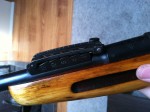

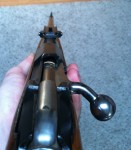
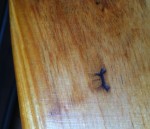
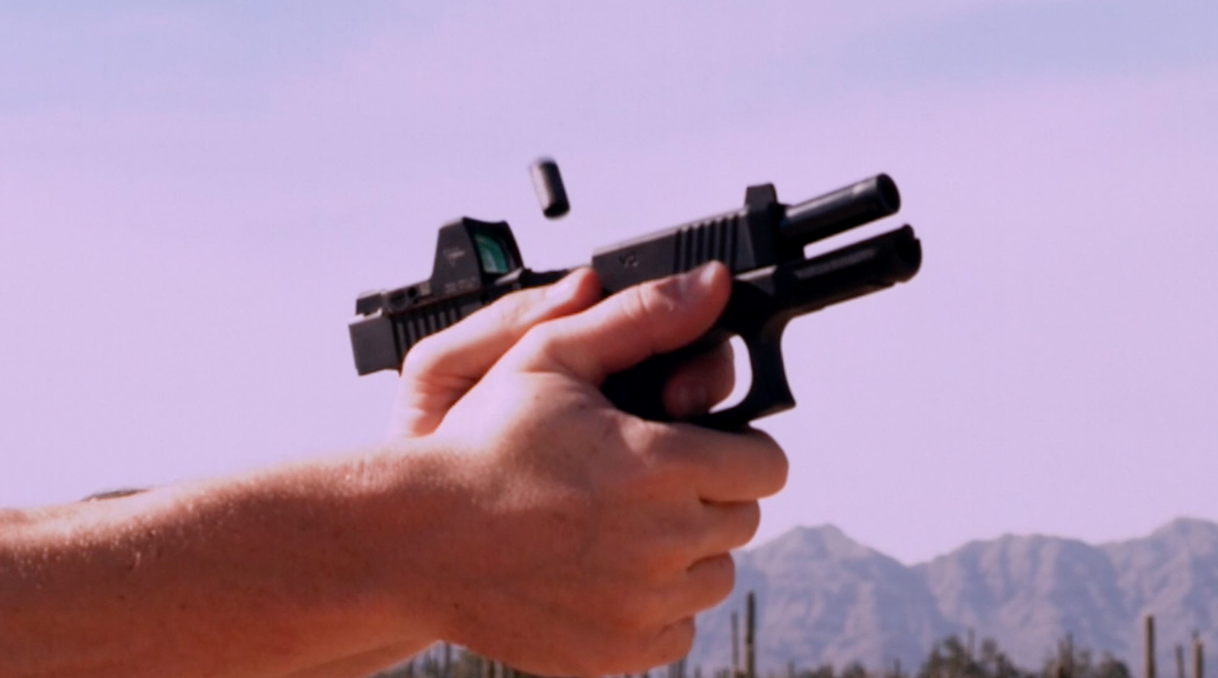

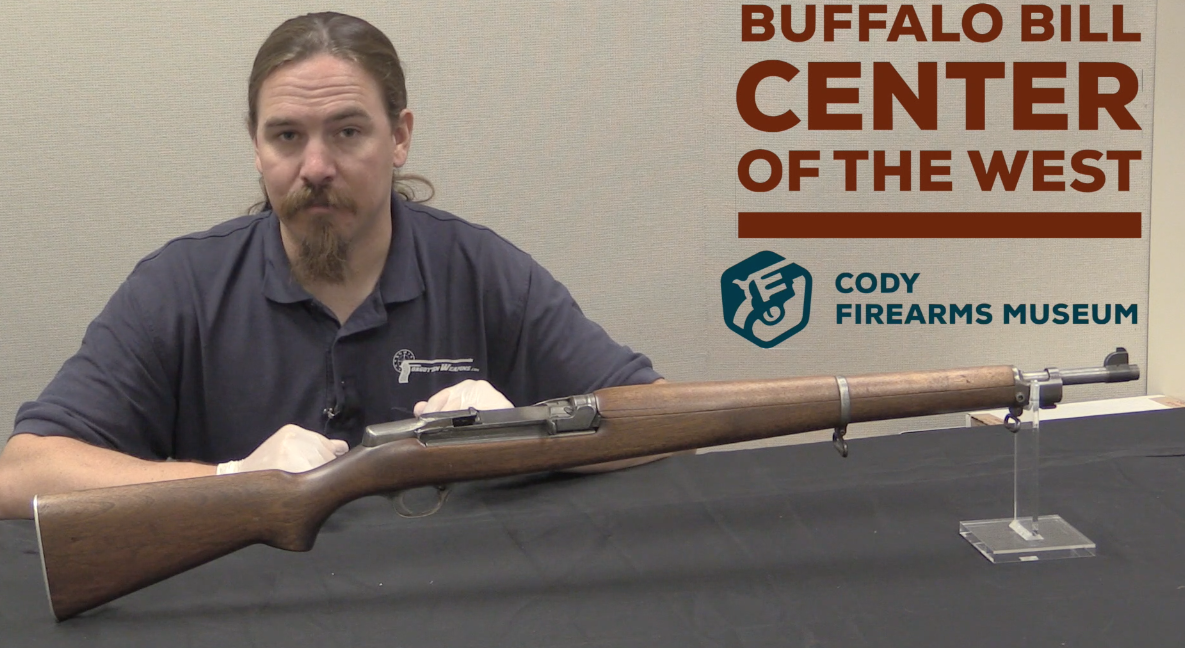
Thanks for the report. Interesting and informative as always.
It is a shame that the M-N lost much of its history and value when it was “sporterized.”
I assume one could re-barrel it and purchase assorted items (especially) a wooden stock to bring it back to its likely original military configuration.
Can’t tell you how many times, at gun shows, I viewed Krags, Mausers, and Arisakas that were “sporterized” and thought to myself of buying them (at their low price) and restoring them back into their original military configuration.
In fact I am doing one now and need a Gewehr 98 receiver pre-1916. Anyone have one for sale? 🙂
Regards
I wouldn’t say it lost any history when it was sporterized; it just lost is value to collectors. Eventually that sporterization will just be another chapter in its history. It’s just too close to our current situation to be seen as a legitimate modification.
Shrug. I have a Type 99 Arisaka that someone sporterized by putting it into a Remington stock. Other than that, the metal is stock and nothing else was done to it. As it is & a set of Lee 7.7×58 dies later, it’s now my best deer/elk/black bear class hunting rifle. It handles well and is significantly lighter than it was wearing a military stock. I wouldn’t have done that to one that was still in military condition but I was happy to spend $150 for it as is and to use it as is.
Your mileage, as they say, will vary.
Twenty years or so ago I bought my “sporterized” 6.5×55 M96/38 Mauser off the rack at the local dealer. Receiver ring marked “Karl Gustaf Stadts Gevarsfactori, 1904”. It’s a “96/38” because the barrel is dated “1942”.
It is in a Fajen Premier Grade Monte Carlo stock, has Williams iron sights, and mounts a Bushnell 3x-9x Custom Series scope in Weaver rings and mounts. Plus Uncle Mike’s QD sling swivels fore and aft. Being a bit of a traditionalist, I put a U.S. issue leather sling with brass keepers on it. (It’s very quick to assume a hasty sling with.)
I suspect the sporterizing job was done in the late Seventies, probably due to two articles in the 1976 Gun Digest; “The 6.5×55; An Old Swede” and “The Practical Light Sporter”. The rifle fits the parameters of the latter article almost exactly, even to barrel length (21″). And the components are consistent with that time frame.
I paid $165 for it (down from $185 marked on the tag), and the dealer threw in a box of issue 156-grain FMJs (the only 6.5×55 he had), just to get the rifle out the door.
At the same time, another customer was buying a Remington M700 in .270, no sights, for $675 and asking about the cost of a scope and installation.
Yes, I did manage to keep a straight face until after I left the store.
BTW, the “sporterized” Swede is the most accurate rifle I’ve ever had, period. It certainly shoots a lot closer than I can hold.
Collector value? Nil.
As a practical rifle? Priceless.
cheers
eon
Exactly.
My LGS has an old M1903 Mk 1 (yes, that’s right. Cut for a Pedersen Device) that was sporterized and heavily engraved years ago. Well done, I might add, especially the silver inlay stag head on the top of the breech… O_o It’s priced stupid cheap because it’s in a left hand stock and no one in this small town is willing to snag it. I’m trying to save the money for it – and then I’ll save for an appropriately good right hand stock – and all I can do is hope my wallet fattens up before someone else understands what is sitting there gathering dust.
Not likely I’d sporterize a mil surplus rifle, mainly because today it’s cheaper to buy one that as already been done. Type 99 are, for whatever reason, easy to find around here and don’t bring much. I do like using the ones that have been sporterize better than those that are as issued.
Really the only original mil surplus bolt actions I’d buy for collecting is a MN Finnish Civil Guard rifle and maybe one with DDR markings.
Otherwise I collect by action type and action design within type. And the more I learn of what has been done, the more incomplete my collection looks.
Funny this should show up today….Dennis Kroh of Empire Arms had a M/N with BOTH Austrian capture marks (AZT) AND Finn capture marks (boxed SA)…if that rifle could only talk…BTW – I bought the book Allied Rifle Contracts in America – if I had one complaint it would be that there are no colored plates (not a”racist” remark – just means, simply, that there are no color pictures…for those of youse who live in Rio Linda)…the book is EXCELLENT and a great source of information about the M/N builds in the US with all the attendant problems of getting material on time and the problems dealing with both the US AND Czarist governments…definitely worth the investment…
CB in FL
Yeah, that’s one thing that really draws me to Mosins. There are so many different paths they have taken and so many different conflicts they were used in that the amount of history in them can really be staggering. I still need to find myself an Austrian or German capture, a Polish 8mm conversion, a Finn Olympic target model, Czech sniper, Spanish Civil War example, US property non-sporterized example, Chatellerault example…the list is just endless. 🙂
Glad you liked the Allied Rifle Contracts book! I found it extremely informative.
Strange M-Ns? Most strange one I saw more then 10 years ago, going by stamps and marking it’t road might have been:
– Montenegrin issue 1891 (very faint NI with crown marks)
– captured by Austro-Hungarians in 1915-16 (k.u.k markings on stock metal reinforcement)
– captured by Russians (and was partially reworked to 1891/30 style – barrel and furniture was shortened and 91/30 style front sight installed)
– captured by Germans
– captured by then current owner while he was in Yugoslav partisans
Ended being sporterised but owner had original stock. He used it for hunting for 50+years. Most funny things? All numbers were matching, and indicated IIRC 1895 Tula made rifle.
What kind of sporterizing did the owner do? Did he cut anything down, or just put it in a sporter stock?
Ian, I wish you luck on Polish 8 mm conversion.
To my best knowledge, however, after the First World War, trying to rationalize its stock of small arms(Lebels. Lebel-Berthiers, Hotchkiss, Chauchats [France at that time the main supplier], Lee-Enfields, Vickers, Mannlichers, Mausers], Poland’s policy was rather switching the used weapons of non-standard calibre with the countries where they were standard (Mosin with Finland, for instance). Since in the former German parition, that now became back part of restituded independent Poland, there was a Mauser rifle factory, Poland decided to stay with the 7.93 cartridge. Which meant that when it decided to buy licences for production of BARs, and 1919 (?) Brownings, they had to be rebarrelled.
I do not exclude the possibility that in an extremity (such as Russo-Polish War of 1920) some desperate measures may have been taken.
Regards, Andrzej
In the aftermath of World War I, most nations that had captured Mosin-Nagants had little interest in keeping them because they were non-standard rifles that fired a different cartridge than most everyone in Europe was using. As a result, since Finland HAD standardized on the Mosin, they bought many of them from other countries’ captured stockpiles and either refurbished them or (later) used the receivers to make their own Mosin variants.
That’s the funny things about these mosins. There were so many of them made that they have history all over the place and can even rival the Mauser action. Excellent work tracing the origins and history of this rifle Ian, shame that someone sporterized it but still a beautiful piece nonetheless.
Did the 7.62x54R ammunition was available in US in 1920s? If yes so many it costs compared to say .30-06 or .30-40 Army? If the 7.62x54R was more expensive than .30-06 it was hard situation for everyone trying to sell unaltered rifles.
At the time, Remington, Winchester and Western all made 7.62x54R ammo.
7.62x54R GI surplus ammo sold for as little as $4 per 1000 in the mid 1920’s. You could buy a new M/N and 1000 rounds of ammo and get change from a twenty through the NRA
Looks like one of the “Finncub” sold in the 60s.
I think you are correct.
The book sounds good. Is there a similar book for USA made handguns for allied countries? I’d like to know more about the Russian S&W’s, the WW2 British guns we made, etc.
This is clearly a finnish conversion, most likly made at the Tikkakosky factory. I have seen several of rifles, lookinalmost the same. Front sight is typical.
Now that I have a good macro lens, I’ll go take some pics of the markings on my Finnish New England Westinghouse 91…
You Americans are very lucky guys ! Not only you have the widest choices of firearms and the cheapest aftermarket accessories in the world but you are also the landing airport of most ex-ordnance weapons being dismissed by any army of this planet.
Over here in Italy everything is priced 2x 3x as much…! Anyway 2/3 years ago, we rcvd a bunch of Nagants from Russia via Germany -ueber alles- at reasonable prices: first deliveries at 120 €uro, then raised to 150-170- and 200 now… as usual…
All in all, I took advantage of those offers and thought myself I could buy more than one and customize one or two with US made parts.
They now look some nicer with ATI plastic stock, scope-rail and a number of other parts.
Yet, I do not understand why imports from China are not charged any duty but imports from US are and heavily….same as I will never understand why US helped Mujahddins in Afghanistan instead of helping Russians againt the radical and dangerous Muslims up there, hiiiii …!
Ciao, brothers, I love yeoll anyway… 🙂